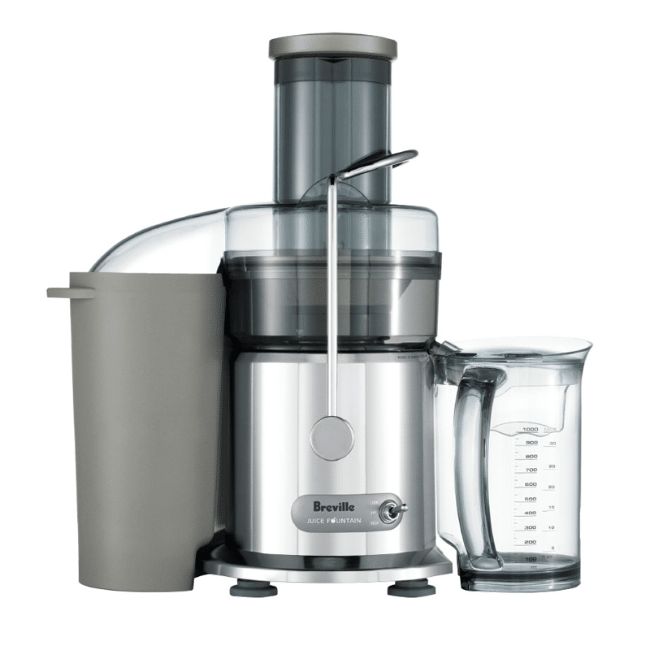Juicing has become increasingly popular over the past few decades.
But there’s more to Juicing than just filling your glass every morning with fresh extracts, especially if you’re new at it; how juicers work.
It might be a real challenge for you to counter.
The answer may be simpler than you think- how juicers work depends on the type of juicer you have.
Masticating juicers are readily accessible, chew through the fruits before pressing the juices out.
On the other hand, a centrifugal juicer works similarly to a washing machine’s spin cycle and spins the components to extract the juice.
While Twin gear juicers need greater manual force.
However, there’s more to how each of the juicers works to extract the juices for you.
Without further ado, let’s get straight in!
How do Juicers Work?

First things first, it’s critical to see how juicers work in general.
So, before we dive into the specifics, let’s take a generalized look at how these machines operate.
To extract the liquid, juicers slice and grind the fruit and vegetables through the machine’s chute.
The “pulp,” which is made up of the flesh, pith, and skin, is a waste product.
These are removed and disposed of in a different container, leaving the beverage pulp-free.
On the flip side, some juicers have filters that allow some pulp, which contains beneficial fiber, to be diverted into the user’s beverage.
Users can research ways to reuse it to reduce waste.
But when it comes to the “technical” part, i.e., the juicing process, it differs for each juicing machine.
Related Reading: Are Masticating Juicers Better – Click Here To Learn More.
Types of Juicers and how they work
The three main types of juicers include Centrifugal juicers, Masticating juicers, and Twin-gear or Triturating juicers.
Each of them has different working mechanisms in ways that are uniquely theirs.
However, it’s important to remember the type of juicer you choose.
Let’s learn more about the three types of Juicers:
Centrifugal Juicers
Centrifugal juicers are true life savers, also widely known as fast juicers.
They are most often used home juicers thanks to their low cost and speed.
Plus, they shred fruits and vegetables at 6,000–14,000 rotations per minute (RPM).
They are small, light-weighted, and sell for a relatively lower price than the masticating juicers.
While they operate at a higher speed, they tend to make more noise.
But the real question is- how do centrifugal juicers work?
Well, much like a washing machine’s spin, a centrifugal juicer spins the ingredients and pushes the liquids to the sides.
There is a shredding plate at the bottom, which receives the material.
The juice is released when the ingredients spin and shred.
On top of everything, it moves pretty quickly, pushing the ingredients to the edges of the juicing basket as the juice pours into your glass from the bottom.
Not to forget, the centrifugal juicer comes with its downsides, too, like every other juicing machine.
Masticating Juicers
Masticating Juicers are also referred to as “cold press juicers.”
They extract more juice but take a little longer to digest the contents.
So, it’s no surprise why they are often known as the “slow juicers.”
It’s the traditional trade-off between time, effort, and the desired result.
Do you put in a little more time and effort to ensure the outcome is what you want?
The answer will tell you if masticating juicer is the ideal choice for you.
With a masticating juicer, cut the veggies or fruits into smaller pieces.
While that’s some extra effort, the results make it worth the while.
Twin-gear (Triturating) Juicers
If you’re thinking about getting yourself a juicer, it’s natural to wonder if it’s worth the investment.
A twin-gear juicer is really it.
Many people who are new to juicing are drawn to the twin gear juicer’s seemingly straightforward design.
However, the lower-end dual-gear juicers require more manual exertion to force the food through the chute.
This leaves a lot of space for clogged gears and chutes.
So, don’t compromise on the price if you wish to take this route because higher-priced ones don’t have the same problems.
Related Reading: The Best Blender Juicer Combo – Read Here.
How do Juicers Work – FAQs
Which one is the best juicer to purchase?
For fast juicing, go for a centrifugal juicer.
For efficient design, choose Twin-gear, while for more juice, get your hands on Masticating juicers.
Which juicer is the easiest to clean?
Cold-press juicer is the easiest to clean.
Can we get orange juice from a juicer?
Yes, but don’t forget to peel it off to avoid flavor dilution.
Is it okay to use my juicer every day?
Yes, it’s perfectly okay to extract juices from your juicer daily.
What to do with leftover pulps?

It’s best to add them to some foods while cooking or use them to make snacks or desserts.
What to do with leftover pulps?
It’s best to add them to some foods while cooking or use them to make snacks or desserts.
Related Reading: Where Are Omega Juicers Made – Click Here To Find Out.
Summing Up
Thanks to juicing for revitalizing the health benefits and convenience.
However, with three different juicers type, it’s important to remember what you want in your juicer.
Each of them has unique mechanisms and a significant impact on the outcomes of your juicing sessions.
So, it all comes down to what you need and is entirely reliant on the priorities of each and every user.
Once you choose wisely, you’re good to go.


